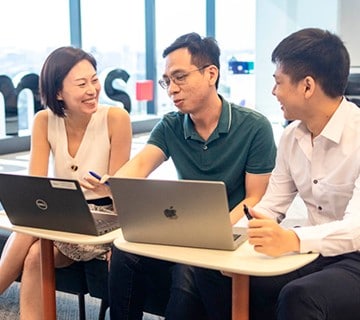Our Stories
Enabling Generational Impact
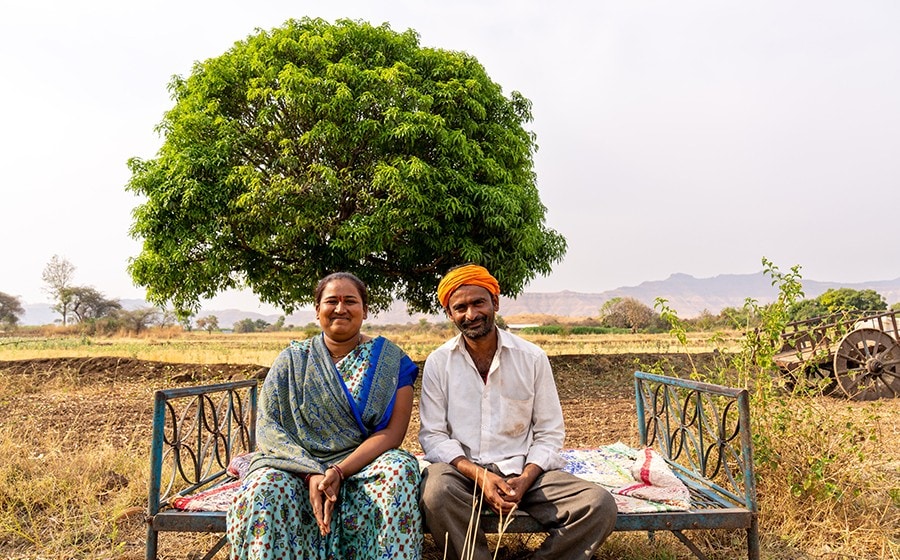
By 7am, Kamal Khumbar has mucked out the buffalo shed, had her morning tea, and cleaned and stocked the family’s modest provision store, ready for the day’s business. “I enjoy running the business,” says the woman known as “nani” (grandma) in the village. “Had I not had this, I would have sat gossiping with the other women,” she says. Instead, the family’s growing business, which also includes a small dairy farm, an onion and potato plot, and a handful of tea stalls, now employs 15 other women and pays for her grandchildren’s education.
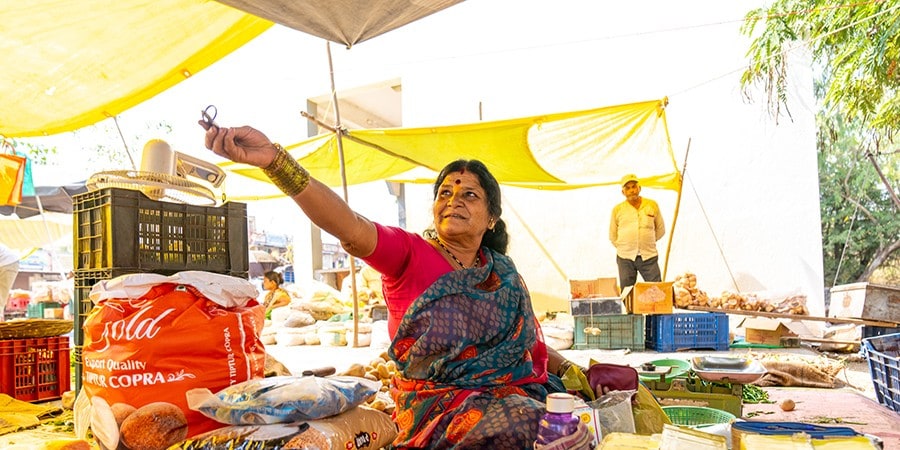
Kamal’s loan has not only benefitted her business and family, but also allowed her to employ 15 other women
The Khumbar family in Maharashtra’s Parinche village is among more than 20,000 rural households that have received loans between US$2,000 and US$5,000 from financial services startup SarvaGram since 2019, aimed at improving their livelihoods, and directed to where it can have the greatest impact.
A Match for Rural Realities
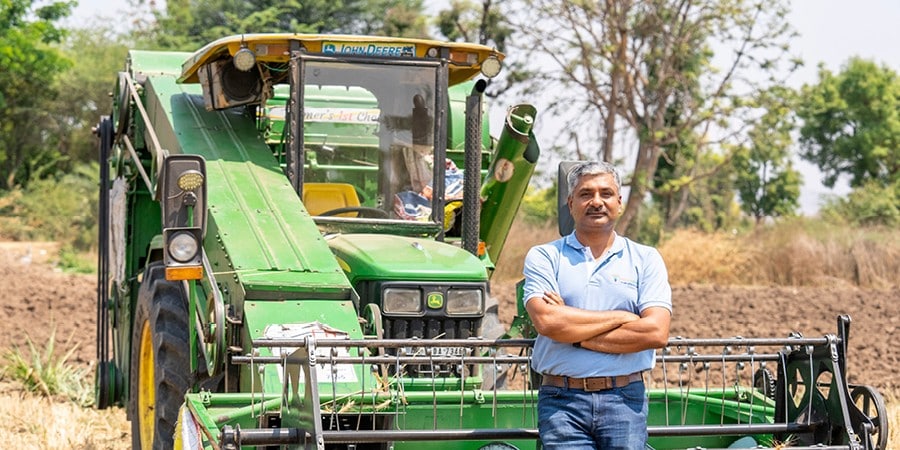
Beyond loans, SarvaGram’s farm equipment rental service allows efficient equipment use, while helping smallholder farmers raise productivity
“Over the last 15 to 20 years, we’ve seen huge changes in rural middle-income households in India, primarily in terms of aspirations,” says Co-founder Utpal Isser, who set up SarvaGram with former ICICI Bank colleague Sameer Mishra. “They want to invest in their productive capacities. They want to invest in their future, in the education of their children, or to build a house, and secure a much better quality of life.”
Yet, the formal financial services sector has not quite caught up with rebalancing the real and perceived risks — and opportunities — these rural households represent.
“We believe they are at an inflection point in terms of income, digital literacy, and opportunity for growth,” he says. “Interventions now will lead to non-linear growth in their capacity. We have the ability to create impact at scale.”
The potential is massive: India has a population of 1.4 billion, and an estimated 80 million rural households with the capacity to absorb “growth capital”. SarvaGram’s vision is to serve 1 million households and impact 5 million lives in the next five years.
With Temasek’s 2022 investment, the company will more than double the number of its outlets in rural India to 125 by 2024, broadening and deepening its reach, and bringing it closer to its vision.
“Access to capital is having an immense social and economic impact on this group, which aligns closely with Temasek’s view that capital cannot only be financial in nature, but have multiple outcomes for communities. For businesses to be successful, communities must thrive,” says Benoit Valentin, Head of Impact Investing at Temasek.
“Access to capital is having an immense social and economic impact on this group, which aligns closely with Temasek’s view that capital cannot only be financial in nature, but have multiple outcomes for communities. For businesses to be successful, communities must thrive.”
Benoit Valentin
Head, Impact Investing
Temasek
For Temasek, impact investing helps ensure sustainable returns for people and planet. While investments directed at mitigating climate change have been in the spotlight, building community resilience is as important, and that is where companies like SarvaGram come in, he says.
Although Temasek has channelled capital into impact-led investments through funds such as ABC Impact and LeapFrog Investments, SarvaGram is its first direct investment in helping communities meet social Sustainable Development Goals.
“What SarvaGram does is provide a pathway for these rural households to break from their daily cycles and low-income ceilings so that their children and grandchildren can live better lives,” says Eliza Foo, Director of Impact Investing at Temasek, who led the investment. “It’s a clear example of how social capital can uplift communities so that every generation prospers, which is very much in line with Temasek’s purpose.”
Temasek's impact investing strategy seeks to create a positive impact on underserved communities while generating financial returns, she says. It aims to address pressing challenges in areas such as financial services, healthcare services, education, agriculture, and climate, in emerging markets across Asia, Africa, and Latin America.
Sustainability is at the core of all that we do. Learn about the other ways we are investing to drive sustainable and inclusive growthHuman-Centric Solutions
What stood out with SarvaGram was its unique, differentiated approach, says Eliza.
The company takes a personalised approach, enabled by technology. Relationship officers on the ground reach villagers at their homes, building trust while getting a “360 degree view” of a household’s needs. This information becomes the data that allows them to not just understand the household’s potential and risks, but to provide a customised solution. This could take the form of loans, support for farm mechanisation, or other investments products aimed at increasing productivity and resilience.
For Kamal, it translated into more value from the 40 dairy cows she managed alongside her provision store. She used to milk them herself, spending one to one-and-a-half hours each morning and evening on the task, says Utpal. “Milking infrastructure could help her do it in 15 to 20 minutes, without touching the milk, so that would result in better quality as well,” he says. “Since she had the cash flow, she was able to do that.”
Sparking Positive Chain Reactions
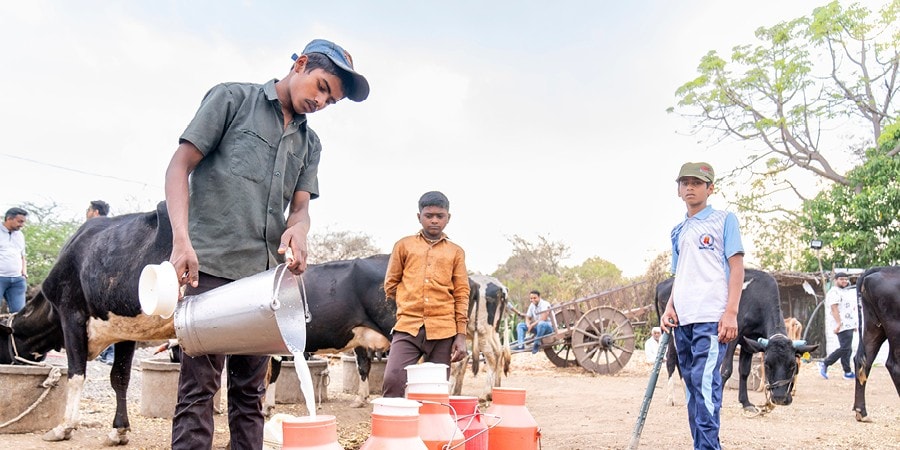
From credit to farm mechanisation equipment, SarvaGram provides solutions that serve the most pressing needs of rural households
For rural communities, the right kind of financing solutions uplift not just households, but whole communities. It also creates better opportunities for more formal financial players to then leverage the deep local knowledge and reach of partners like SarvaGram, says Utpal, who plans to further grow SarvaGram’s reach through partnerships.
“Eventually, we see ourselves partnering with banks and formal financial players. Their strength is their capital, and ours is our deep understanding of the customer, ability to appraise the potential risks, and our distribution network. By combining these strengths, we will be able to achieve more and produce better results, with rural households the biggest winner.”
Ultimately, this is what catalytic capital is about, says Eliza. “It is about creating a chain reaction, one that brings all stakeholders together to create a system level change.”
Jump to

